I want to save a plot in python as a PDF. My problem ist, when I run my code I get a plot that looks like this:
When I now maximise the window I get a plot that looks like this:
Note that the second one looks much better, because it is not so "cramped". If I now save the plot using plt.savefig('floors.pdf') the saved plot looks like the first picture. I need a way to save it so that it looks like in the second picture.
I found this: How to make savefig() save image for 'maximized' window instead of default size but it is not helping because I don't want to save a set resolution in pixels. I want to save it as an PDF, because that way it stays a vector graphic.
My code:
import os
import numpy as np
import matplotlib.pyplot as plt
from scipy.optimize import curve_fit
from uncertainties import ufloat
os.chdir('PlayGround/SAOIF floors')
# data ------------------------------------------
floors = np.array([1,2,3,4,5,6,7,8,9,10,11,12,13,14,20,25,27,35,40,47,48,50,55,61,68,74,75,77,81])
N = np.arange(len(floors))+1
# plot raw data ---------------------------------
fig = plt.figure()
plt.suptitle('SAOIF Floors')
ax1 = plt.subplot(121)
ax1.plot(N,floors,'o-')
ax1.set_title('All Floors')
ax1.set_ylabel('Floor Number')
ax1.set_xticks(np.arange(1, len(N)+1, len(N)//8))
ax1.set_yticks(np.arange(floors[0], floors[-1]+1, (floors[-1] - floors[0])//8))
ax1.grid()
# fit data --------------------------------------
floors = floors[13::]
N = N[13::]
x = N
y = floors
linera_function = lambda x, m, b: m*x+b
popt, pcov = curve_fit(linera_function, x, y)
error = np.sqrt(np.diag(pcov))
m = round(popt[0],2)
b = round(popt[1],2)
dm = round(error[0],2)
db = round(error[1],2)
# plot fit --------------------------------------
ax2 = plt.subplot(122)
ax2.set_title('Floors 14-81')
ax2.plot(x, y,'o', label='data') # plot data
ax2.plot(x, linera_function(x, *popt), label=f'fit: $f(x)=m \cdot x + b$ \n$m={m}\pm{dm}$ \n$b={b}\pm{db}$') # plot fit
# predicting next floor -------------------------
m = ufloat(m, dm)
b = ufloat(b, db)
next_floor = linera_function(N[-1]+1, m, b)
print('m = {:L}'.format(m))
print('b = {:L}'.format(b))
print('Next floor: {:L}'.format(next_floor))
# plot prediction -------------------------------
x = list(x)
y = list(y)
x.append(x[-1]+1)
y.append(next_floor.n)
next_floor_n = int(round(next_floor.n))
next_floor_s = int(round(next_floor.s))
ax2.errorbar(N[-1]+1, next_floor.n, yerr=next_floor.s, label=f'predicted next floor \nnumber$={next_floor_n} \pm {next_floor_s}$', capsize=5, fmt='o')
ax2.plot([N[-1], N[-1]+1.7], [linera_function(N[-1], m, b).n, linera_function(N[-1]+1.7, m, b).n],'--', color='#ff7f0e')
ax2.set_xticks(np.arange(x[0], x[-1]+1, round((x[-1] - x[0])/8)))
ax2.set_yticks(np.arange(y[0], y[-1]+1, round((y[-1] - y[0])/8)))
ax2.legend()
plt.gcf()
fig.supxlabel('common_x')
plt.savefig('floors.pdf')
plt.show()